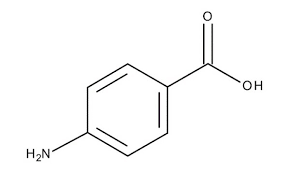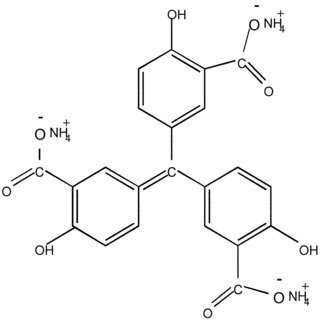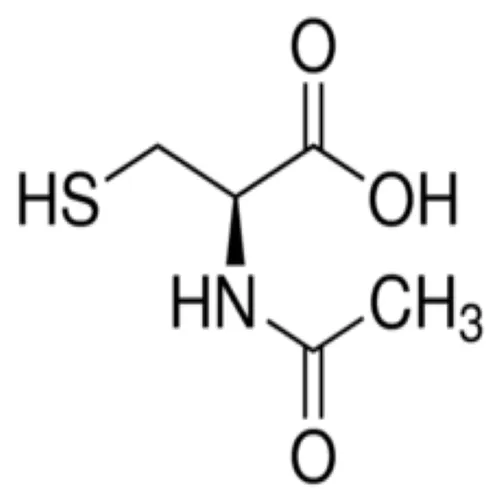Para Amino Benzoic Acid E.P (PABA, 4-Amino Benzoic Acid)
₹ 810.00 – ₹ 23,780.00Price range: ₹ 810.00 through ₹ 23,780.00
Product Specifications
CAS NO. 150-13-0
HSN CODE : 29224990
- Chemical Formula: C₇H₇NO₂
- Molecular Weight: 137.14 g/mol
- Appearance: White to slightly yellow crystalline powder
- Melting Point: 186–189°C
- Solubility:
- Slightly soluble in water
- Soluble in ethanol, acetone, and alkaline solutions
- pH: Slightly acidic in aqueous solution
- Odor: Odorless or slightly characteristic
HealthChemix Support
GST Invoice Available
Secure Payments
365 Days Help Desk
Return & Warranty Policy
Product Details
Para-Amino Benzoic Acid E.P. (PABA, 4-Amino Benzoic Acid) / CAS NO. 150-13-0
Para-Amino Benzoic Acid (PABA), also known as 4-Amino Benzoic Acid, is an organic compound widely used in pharmaceuticals, cosmetics, and industrial applications. It is a white crystalline powder that is part of the B-complex group of vitamins, although it is not classified as an essential nutrient for humans. The E.P. (European Pharmacopoeia) designation signifies its high-purity grade, suitable for pharmaceutical and medical uses. The CAS Number 150-13-0 uniquely identifies this compound.
Physical and Chemical Properties
- Chemical Formula: C₇H₇NO₂
- Molecular Weight: 137.14 g/mol
- Appearance: White to slightly yellow crystalline powder
- Melting Point: 186–189°C
- Solubility:
- Slightly soluble in water
- Soluble in ethanol, acetone, and alkaline solutions
- pH: Slightly acidic in aqueous solution
- Odor: Odorless or slightly characteristic
Applications of Para-Amino Benzoic Acid (PABA)
1. Pharmaceutical Applications
PABA is extensively used in pharmaceutical formulations due to its therapeutic properties:
- Folic Acid Precursor: PABA is an essential component for bacterial synthesis of folic acid, making it useful in studying bacterial growth and metabolism.
- Treatment of Dermatological Disorders:
- It is used in the treatment of skin conditions such as vitiligo and scleroderma.
- In some cases, it is included in supplements for skin health.
- Antioxidant Properties: PABA exhibits antioxidant properties, which may help reduce oxidative stress in biological systems.
2. Cosmetics Industry
- Sunscreen Agent: Historically, PABA was widely used as a UVB filter in sunscreens due to its ability to absorb ultraviolet light effectively. However, its use has declined due to reports of allergic reactions and potential phototoxicity.
- Hair and Skin Products: PABA is sometimes included in cosmetic formulations for its potential to enhance skin and hair health.
3. Industrial Applications
- Intermediate in Dye Manufacturing: PABA is a key raw material in the synthesis of azo dyes and other organic pigments.
- Polymer Industry: It is used in the production of certain polymers and resins.
4. Laboratory Applications
- PABA is used as a reagent in chemical synthesis and analytical chemistry.
- It is employed in the study of enzymatic activity and bacterial growth.
5. Nutritional Supplements
Although not officially classified as a vitamin, PABA is sometimes included in B-complex vitamin supplements. It is believed to support healthy skin, hair pigmentation, and intestinal bacteria.
Toxicity and Hazards of Para-Amino Benzoic Acid
While PABA is generally safe in controlled applications, improper handling or overexposure can pose health and environmental risks.
Health Hazards
- Acute Exposure:
- Inhalation: Can cause respiratory irritation.
- Skin Contact: May lead to skin irritation or allergic dermatitis, particularly in individuals with sensitivity to PABA.
- Eye Contact: Causes irritation, redness, and discomfort.
- Ingestion: Large doses can lead to nausea, vomiting, and gastrointestinal distress.
- Chronic Exposure:
- Prolonged or excessive exposure may result in photosensitivity and other skin reactions.
- Chronic use in dietary supplements or topicals may lead to allergic sensitization in some individuals.
Environmental Hazards
- PABA is not highly toxic to aquatic life, but improper disposal in large quantities could disrupt local ecosystems.
- It is biodegradable but should not be released directly into the environment.
Safety Measures for Handling PABA
1. Personal Protective Equipment (PPE)
When handling PABA, use appropriate PPE:
- Gloves to prevent skin contact.
- Safety goggles to protect eyes.
- A lab coat to avoid contamination of clothing.
- A mask or respirator in situations where dust may be present.
2. Engineering Controls
- Use PABA in a well-ventilated area or under a fume hood to minimize inhalation exposure.
- Avoid generating dust, as it can be irritating to the respiratory system.
3. Safe Storage
- Store PABA in a cool, dry, and well-ventilated area.
- Keep it in tightly sealed containers to protect it from light, heat, and moisture, which can degrade the compound.
- Ensure that it is stored separately from oxidizing agents and strong acids.
4. First Aid Measures
- Inhalation: Move the affected individual to fresh air. Seek medical attention if symptoms persist.
- Skin Contact: Wash thoroughly with soap and water. Remove any contaminated clothing.
- Eye Contact: Rinse eyes with water for at least 15 minutes. Seek medical advice if irritation persists.
- Ingestion: Do not induce vomiting. Rinse mouth and seek medical attention immediately.
Disposal Guidelines
Dispose of PABA according to local and national regulations. Avoid releasing it into the environment or water systems. Use a licensed waste disposal service for proper handling and disposal.
Conclusion
Para-Amino Benzoic Acid (PABA), with its diverse applications in pharmaceuticals, cosmetics, and industrial processes, is a valuable compound in scientific and commercial contexts. Its role as a sunscreen agent, folic acid precursor, and antioxidant highlights its versatility. However, its potential hazards, including skin sensitization and environmental impact, necessitate careful handling, storage, and disposal. By following safety protocols, PABA can be effectively utilized while minimizing risks to health and the environment.
Other Product
Related products
-
Aluminon (Aurin Tricarboxylic Acid Triammonium Salt) | CAS No. 569-58-4
₹ 700.00 – ₹ 6,000.00Price range: ₹ 700.00 through ₹ 6,000.00 This product has multiple variants. The options may be chosen on the product page -
N-Acetyl-L-Cysteine ( For Biochemistry ) ( 2-Acetamido-3-Mercapto Propionic Acid )
₹ 455.00 – ₹ 1,100.00Price range: ₹ 455.00 through ₹ 1,100.00 This product has multiple variants. The options may be chosen on the product page



